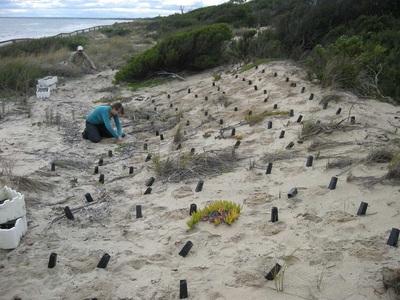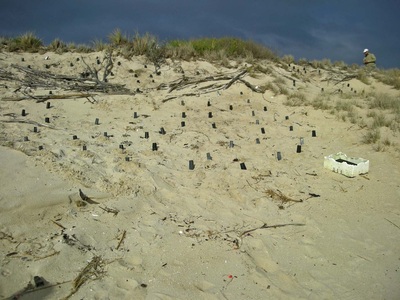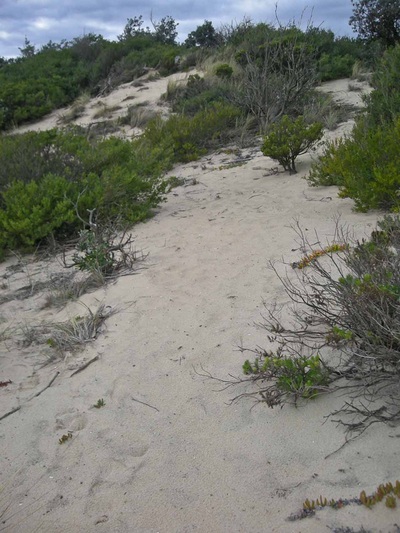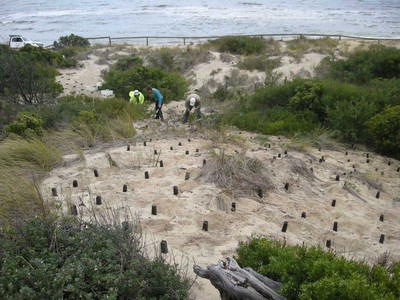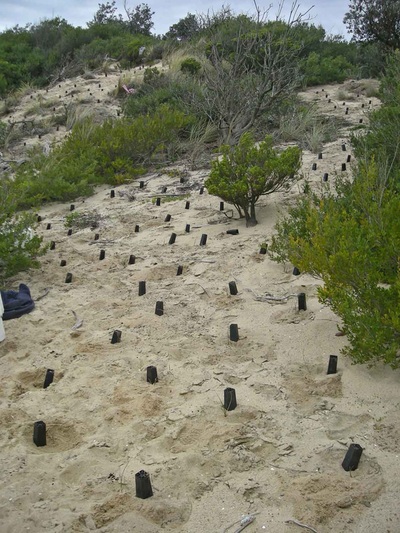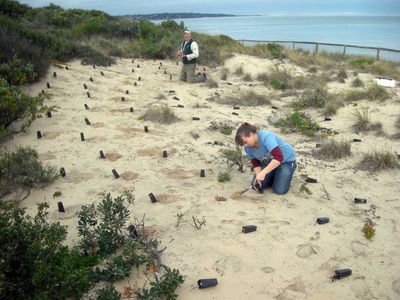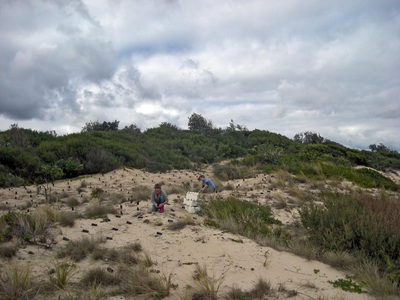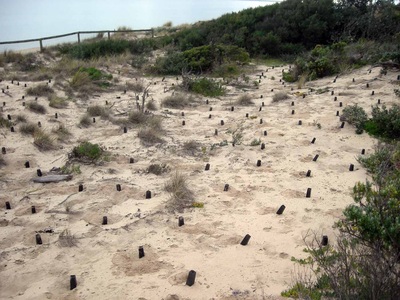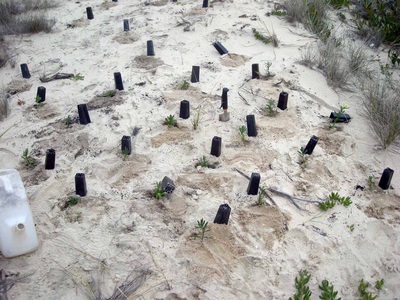The Seaford Foreshore Friends in conjunction with the Carrum Indigenous Nursery have been successful in obtaining a grant from Coastcare to study spinifex and collect information on other dune revegetation projects.
The project will Identify the best method of propagating spinifex in the nursery and plant 500 spinifex tubestock raised from seed.
We aim to plant another 100 spinifex grown from cuttings of males and females into areas of the opposite sex. This would require some mapping of the current spinifex patches.
Trial companion planting using tubestock of Senecio plants with a spinifex seed planted direct into the dune beside it will also be trialled.
Collating information about the use of spinifex in dune revegetation would be passed onto other coastal groups and hopefully a library of information will be made that will be easily accessible to land managers and friends groups.
Seaford Foreshore has a rare Coastal Banksia Woodland running down its entire length - the dune vegetation is essential to protect it.
Seaford Foreshore has suffered a lot of erosion over the last few years and a lot of the Spinifex has been washed
away. We aim to grow more Spinifex further up the dunes so that there is a better chance of cross pollination and try to minimise further loss of sand.
Seed set in Spinifex was very low this year due to loss of plants and the fact that the male and female plants are distant from each other - this means there is little chance of natural regeneration.
If there is sufficient spinifex cover, the introduced Marram grass can gradually be removed.
With more spinifex on the dunes there would be less impact from foot traffic and the improved shape of the dune would help protect it from storm surges.
On the 6th August 2014 the Friends planted 450 spinifex tubestock in Block 5 which is just south of McCulloch Avenue and another 100 plants into the foredune that was planted out in 2013.
On 20th August another 300 spinifex plants were put in Block 6 along with 40 Scenecio plants which will host direct seeding of spinifex in the next month.
The project will Identify the best method of propagating spinifex in the nursery and plant 500 spinifex tubestock raised from seed.
We aim to plant another 100 spinifex grown from cuttings of males and females into areas of the opposite sex. This would require some mapping of the current spinifex patches.
Trial companion planting using tubestock of Senecio plants with a spinifex seed planted direct into the dune beside it will also be trialled.
Collating information about the use of spinifex in dune revegetation would be passed onto other coastal groups and hopefully a library of information will be made that will be easily accessible to land managers and friends groups.
Seaford Foreshore has a rare Coastal Banksia Woodland running down its entire length - the dune vegetation is essential to protect it.
Seaford Foreshore has suffered a lot of erosion over the last few years and a lot of the Spinifex has been washed
away. We aim to grow more Spinifex further up the dunes so that there is a better chance of cross pollination and try to minimise further loss of sand.
Seed set in Spinifex was very low this year due to loss of plants and the fact that the male and female plants are distant from each other - this means there is little chance of natural regeneration.
If there is sufficient spinifex cover, the introduced Marram grass can gradually be removed.
With more spinifex on the dunes there would be less impact from foot traffic and the improved shape of the dune would help protect it from storm surges.
On the 6th August 2014 the Friends planted 450 spinifex tubestock in Block 5 which is just south of McCulloch Avenue and another 100 plants into the foredune that was planted out in 2013.
On 20th August another 300 spinifex plants were put in Block 6 along with 40 Scenecio plants which will host direct seeding of spinifex in the next month.
